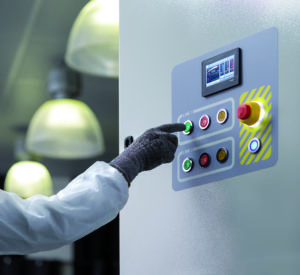Smart grids have been in the headlines for over a decade. Today we’ve finally reached an impasse: our existing energy infrastructure is no longer fit for purpose. It is crumbling under the weight of abnormal weather conditions, demand fluctuations, and momentous changes to baseloads, historically supported by fossil fuels.
Just a few short months ago, flash flooding across Europe left many households, hospitals, and businesses grappling with severe power outages. Unplanned power disruption across California last summer and Texas this winter have raised questions about the existing grid’s ability to withstand increasingly extreme weather conditions. An analysis of US Department of Energy data published in September 2020 found weather-related power outages are up by 67% since 2000. Major global events – such as this year’s Tokyo Olympics – tend to bring the question of power reliability into the spotlight, as Japan braced for or a surge in electricity use and supply/demand fluctuations common for hot summer months. Luckily, the fears didn’t materialize.
Powering business continuity, enabling a prosumer revolution
These cases illustrate just how dependent our increasingly digital world, cities, critical infrastructure, and transportation are on reliable, uninterrupted power. Blackouts grind the developed world to a halt, undermining business continuity, interrupting connectivity, and hindering productivity. As the energy transition towards cleaner energy sources gathers pace, we are already able to marry this with digital technology to use energy more efficiently and ease the demand on grids. This convergence of electric and digital at scale, or ‘Electricity 4.0’ will be a vital partnership to achieve net-zero whilst maintaining a resilient power value chain… especially as we increasingly connect more power-intensive IoT devices and electric vehicles (EVs) to the network. These pre-emptive upgrades are not just necessary. They are vital.
The increasing fragility of existing power grids also highlights our dependence on centralized energy providers and distribution. A relatively small number of producers currently supply all our energy needs. On the other hand, resilient bi-directional smart grids – what we call Grids of the Future – offer not only a more efficient way to manage energy but the potential to decentralize, decarbonize and stabilize power systems. Smart grids will be able to support a 70-80% decarbonized power generation mix, incorporating additional clean energy from microgrid/solar PV and wind farms, powering businesses towards a net-zero future amid growing consumer pressure on firms to become more sustainable.
This, in turn, will enable a prosumer revolution – potentially putting a greater share of the energy supply back into the hands of consumers and businesses, with a (still essential) baseload from larger providers. The combination of increased local power generation capabilities plus digitally-enabled remote diagnostics and repairs will provide a smarter, decarbonized, and increasingly resilient ‘weather-agnostic’ grid.
Delivering environmental compliance at pace
We also have robust environmental targets to hit. To reach net-zero by 2050, we must halve CO2 emissions by the end of the decade, moving 3-5 times faster than current commitments. What might seem like an insurmountable challenge, is actually possible already with ‘Electricity 4.0’, the combination of electric and digital at scale (which we firmly believe is the fastest way to decarbonize the planet).
On the supply side, electricity is the most efficient energy with almost 100% maximum thermal efficiency. Electricity also allows us to be more sustainable with an ever-increasing share of renewables in the mix. Balance this on the demand side with digital innovation that enables us to measure and tackle energy waste (vital when you consider that around 60% of global energy is today lost or wasted) and we have the solutions we need already at our fingertips.
Let’s consider, as an example, the rise of EVs. They are 2-3 times more efficient than cars running on petrol or diesel. But we simply cannot deploy EVs at scale to help decarbonize personal transportation without clean electricity and smart decentralized bi-direction digital grids as the foundation. So with the price of renewable electricity declining by 89% from USD 359 to USD 40 in a decade, clean electricity is increasingly good for the pocket as well as the planet.
Driving societal prosperity and equal opportunities
As the developed world will benefit from decarbonized cities, industry, and transportation with Electricity 4.0, emerging economies will also benefit from a more equal ‘playing field’.
Renewables offer the opportunity for economic growth to those economies currently living without modern power – roughly 10% of the world’s population. Access to energy is a basic human right. Reliable clean power provides a path to a better life, supports access to education, better sanitation, and improved living conditions. It could improve many other services and their penetration, from healthcare to financial inclusion.
Off-grid communities across the globe now have the potential to generate their own energy on rooftops, fields, or on water through solar panels, or within their communities thanks to microgrids or wind turbines. And where they can be connected to a digital grid, they could also have an option to sell or share excess energy, in addition to storing it. Take the Villaya microgrid for example – an off-grid innovation housed within a shipping container. It offers a mobile, flexible and cost-effective solution for schools, healthcare facilities, and other public buildings to access clean, reliable electricity.
Harnessing the power of solar worldwide
Even more, opportunities could emerge as and when the power of the sun could be harvested and transmitted cross-continentally with the help of ‘supergrids’ – potentially becoming the new ‘oil’ for some of the poorest countries on the planet – in parts of Africa and Asia.
The case is compelling. More energy from the sun hits the Earth in a single hour than the entire population can consume in a year – all we need to do is harness and use it. Finding a way to connect peak afternoon solar power in a one-time zone to peak evening demand in another, could reduce the need for fossil-fueled backup capacity both locally and globally.
This all goes to show that when we invest in sustainable decentralized smart grid technologies, it’s also our chance to make the world a better place – more equal, predictable, and fair. This is an investment in our collective future worth making.



